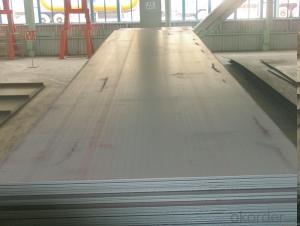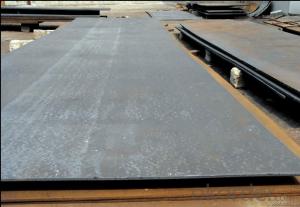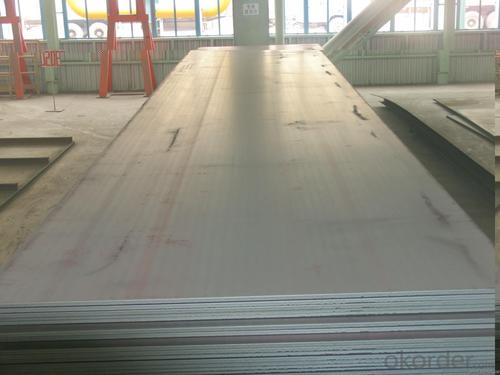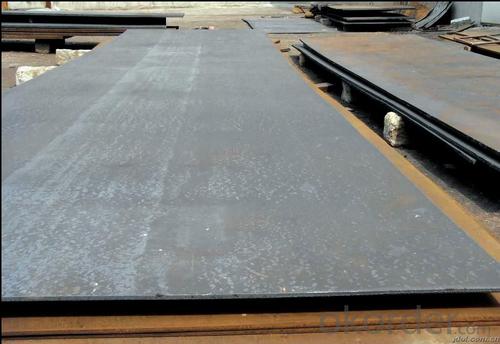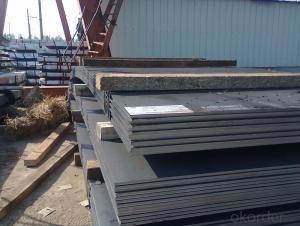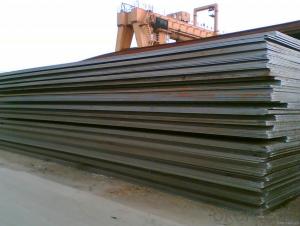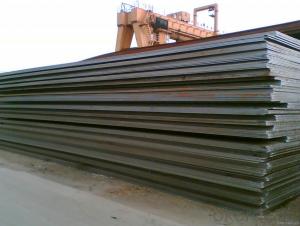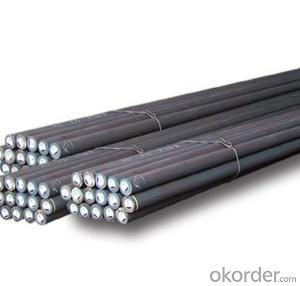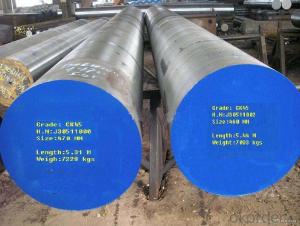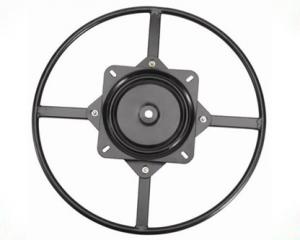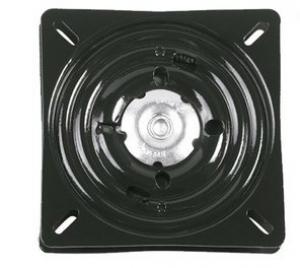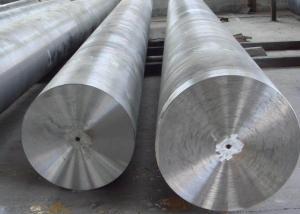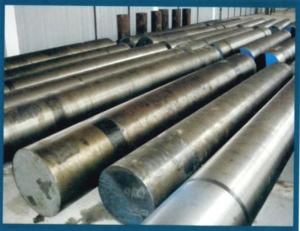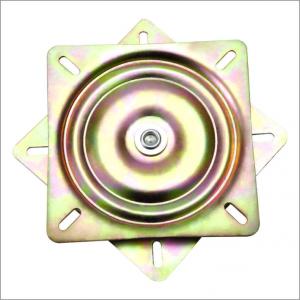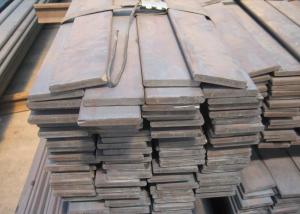Special Steel SKD11 Cold Working Die Steel Plate
- Loading Port:
- China main port
- Payment Terms:
- TT OR LC
- Min Order Qty:
- 25 m.t.
- Supply Capability:
- 10000 m.t./month
OKorder Service Pledge
OKorder Financial Service
You Might Also Like
Specification
Chemical Composition(%)
| Country | Standard | C | Si | Mn | Cr | Mo | V | S | P | Other |
| China(GB) | Cr12Mo1V1 | 1.40-1.60 | ≤0.60 | ≤0.60 | 11.0-13.0 | 0.70-1.20 | ≤1.10 | ≤0.030 | ≤0.030 | Co≤1.00 |
| USA(ASTM) | D2 | 1.40-1.60 | 0.30-0.50 | 0.30-0.50 | 11.0-13.0 | 0.70-1.20 | 0.8 | ≤0.025 | ≤0.025 | Co:0.60 |
| Germany(DIN) | 1.2379 | 1.50-1.60 | 0.10-0.40 | 0.15-0.45 | 11.5-12.5 | 0.60-0.80 | 0.90-1.10 | ≤0.030 | ≤0.030 | - |
| Japan(JIS) | SKD11 | 1.40-1.60 | ≤0.40 | ≤0.60 | 11.0-13.0 | 0.80-1.20 | 0.20-0.50 | - | - | Ni≤0.50 |
Available Size
| Rolled flat steel | 12-90mm×205-610mm×L |
| Forged flat steel | 100-300mm×400-600mm×L |
Characterstics
| 1.High hardening ability and quench-hardening performance | ||||||
| 2.High abrasive resistance | ||||||
| 3.Good oxidation resistance at elevated temperatures | ||||||
| 4.Less deformation after heat treatment |
Applications: suitable for various complicated cold working dies with high precision and long lifetime,such as punching dies,cold extrusion dies,thread rolling dies,screw plates,cold extrusion dies,and precise measuring devices
Product show:
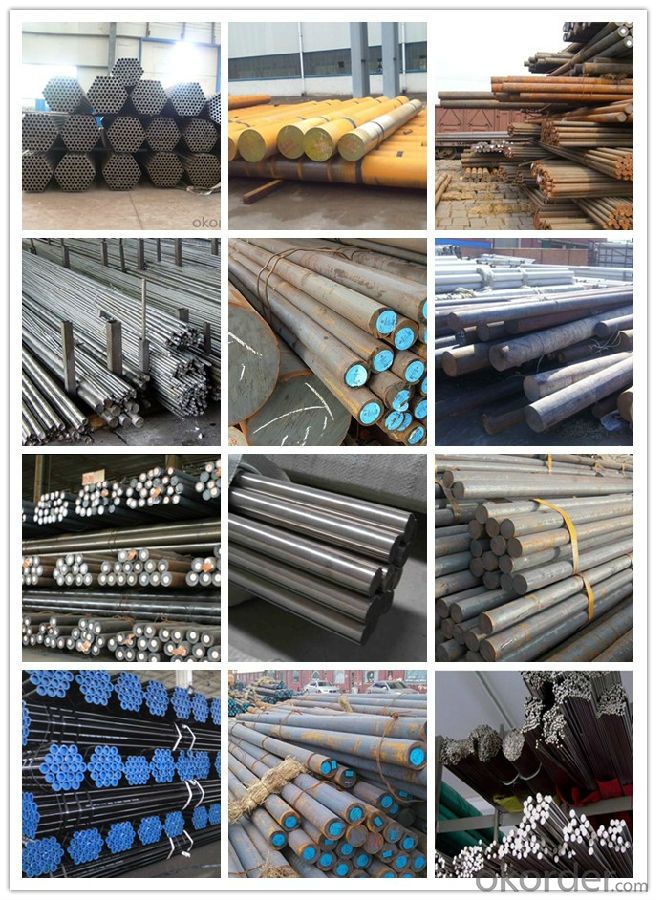
Workshop show:
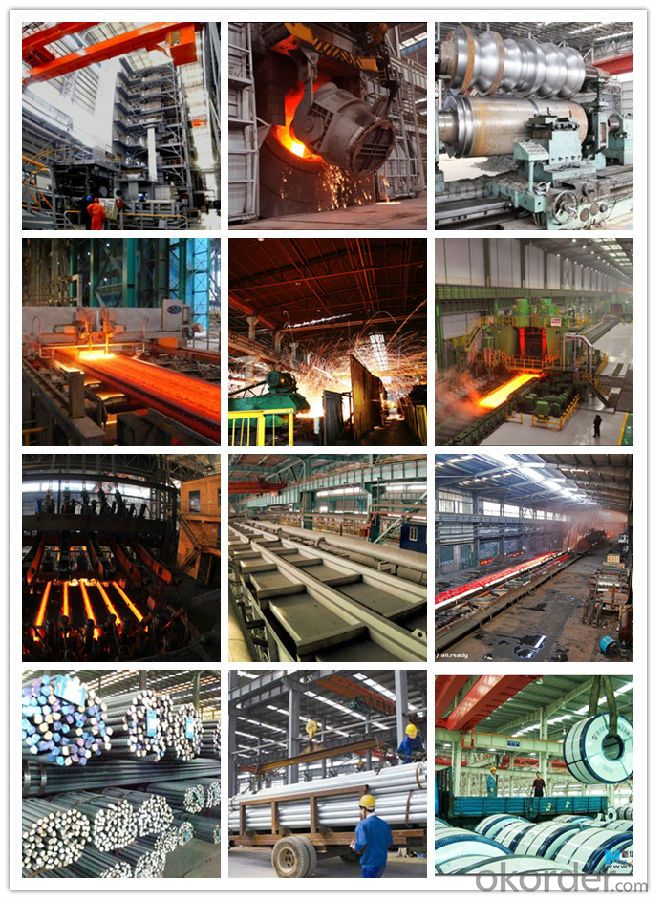
FAQ:
1, Your advantages?
professional products inquiry, products knowledge train (for agents), smooth goods delivery, excellent customer solution proposale
2, Test & Certificate?
SGS test is available, customer inspection before shipping is welcome, third party inspection is no problem
3, Payment Terms?
30% TT as deposit and 70% before delivery.
Irrevocable L/C at sight.
4, Trading Terms?
EXW, FOB, CIF, FFR, CNF
5, After-sale Service?
We provides the services and support you need for every step of our cooperation. We're the business partner you can trust.
For any problem, please kindly contact us at any your convenient time.
We'll reply you in our first priority within 24 hours.
- Q: How does precipitation-hardening steel achieve high strength through heat treatment?
- Precipitation-hardening steel achieves high strength through a process called heat treatment. This involves heating the steel at a specific temperature to dissolve the alloying elements evenly throughout the metal. The steel is then rapidly cooled, forming a supersaturated solid solution. Subsequent aging or precipitation heat treatment allows tiny particles to precipitate out, strengthening the steel. These fine particles hinder the movement of dislocations, enhancing the steel's strength while maintaining its toughness.
- Q: What are the requirements for special steel used in electronic components?
- The special steel used in electronic components must meet specific and strict requirements. To begin with, it needs to have excellent electrical conductivity in order to effectively transmit electrical signals within the components. This is crucial for the proper functioning and performance of electronic devices. Furthermore, the steel used in electronic components must possess high resistance to corrosion in order to protect the components from environmental factors such as moisture, humidity, and exposure to chemicals. Corrosion can cause the deterioration and failure of electronic components, so the steel must be able to withstand these potential hazards. Another important requirement is that the special steel should have low magnetic permeability. Magnetic interference can have a negative impact on the performance of electronic components, particularly in sensitive devices like microchips. Therefore, the steel used in electronic components should have minimal magnetic properties to avoid any interference with the operation of the components. Moreover, the steel must have good thermal conductivity to efficiently dissipate the heat generated within the electronic components. This is particularly crucial in devices that generate a significant amount of heat, as inadequate thermal conductivity can lead to overheating and potential damage to the components. Lastly, the special steel used in electronic components should have high strength and durability to ensure long-lasting and reliable performance. The components are often subjected to mechanical stress, vibrations, and other external forces, so the steel must have the necessary strength to withstand these conditions without deforming or failing. In conclusion, the requirements for special steel used in electronic components include excellent electrical conductivity, high corrosion resistance, low magnetic permeability, good thermal conductivity, and high strength and durability. Meeting these requirements is crucial for achieving optimal performance and durability of electronic devices.
- Q: What are the properties of martensitic steel?
- Martensitic steel is characterized by its high strength, hardness, and wear resistance. It possesses a unique microstructure consisting of a body-centered tetragonal crystal lattice, resulting in its distinctive properties. Martensitic steel can be hardened through quenching and tempering processes, allowing it to maintain its strength even at elevated temperatures. Additionally, it exhibits good corrosion resistance and is commonly used in applications that require high toughness and durability, such as in cutting tools, surgical instruments, and automotive components.
- Q: What are the environmental impacts of special steel production?
- The environmental impacts of special steel production include air pollution from the combustion of fossil fuels used in the production process, water pollution from the discharge of wastewater containing heavy metals and chemicals, and land degradation from mining activities to extract raw materials. Additionally, the high energy intensity of steel production contributes to greenhouse gas emissions, contributing to climate change.
- Q: What are the different methods for joining special steel components?
- There are several methods for joining special steel components, including welding, brazing, soldering, and mechanical fastening. Welding involves melting the base metals and adding a filler material to create a strong bond. Brazing and soldering use a lower melting point filler material to join the components. Mechanical fastening includes methods like bolts, screws, and rivets to hold the components together. Each method has its own advantages and is chosen based on the specific requirements of the application.
- Q: What are the main characteristics of magnetic steel forgings?
- Magnetic steel forgings exhibit several key characteristics that make them highly desirable in various industries. Firstly, magnetic steel forgings possess excellent magnetic properties, allowing them to be easily magnetized and demagnetized. This property makes them suitable for applications where magnetism is required, such as in electrical motors and generators. Secondly, magnetic steel forgings possess high strength and durability. Due to the forging process, the steel is compressed and shaped, resulting in a dense and uniform microstructure. This enhances the mechanical properties of the steel, including its tensile strength, impact resistance, and fatigue strength. As a result, magnetic steel forgings can withstand heavy loads and harsh operating conditions, making them ideal for use in demanding applications such as automotive components, industrial machinery, and aerospace parts. Another characteristic of magnetic steel forgings is their excellent corrosion resistance. The forging process helps to refine the grain structure of the steel, making it less susceptible to corrosion and oxidation. This property is crucial in industries where components are exposed to corrosive environments or high temperatures, such as marine applications or oil and gas equipment. Furthermore, magnetic steel forgings offer good machinability and weldability. The forging process not only enhances the mechanical properties of the steel but also improves its machinability, allowing it to be easily shaped and modified into intricate designs. Additionally, magnetic steel forgings can be readily welded without compromising their integrity, providing flexibility in manufacturing and assembly processes. Lastly, magnetic steel forgings exhibit excellent dimensional stability. The forging process involves controlled heating and cooling, which helps to minimize dimensional changes and distortions. This ensures that the final product maintains its shape and dimensions, enabling precise fit and compatibility with other components. In summary, the main characteristics of magnetic steel forgings include excellent magnetic properties, high strength and durability, corrosion resistance, good machinability and weldability, and dimensional stability. These characteristics make magnetic steel forgings highly versatile and widely used in various industries, contributing to their overall success and popularity.
- Q: How does special steel contribute to sustainability?
- Special steel contributes to sustainability in several ways. Firstly, it is highly durable and has a longer lifespan compared to traditional steel, reducing the need for frequent replacements and minimizing waste. Additionally, special steel can be recycled and reused multiple times without losing its properties, reducing the demand for new raw materials and energy consumption in the production process. Furthermore, special steel offers superior strength and lightweight characteristics, enabling the development of more fuel-efficient vehicles and structures, thus reducing carbon emissions. Overall, special steel's durability, recyclability, and energy efficiency make it a key material in promoting sustainable practices in various industries.
- Q: How does special steel contribute to the electrical conductivity of products?
- Several methods can be employed to utilize special steel in enhancing the electrical conductivity of products. Firstly, the formulation of special steel alloys can be tailored with specific chemical compositions that enhance its electrical conductivity. For instance, the addition of elements like copper, silver, or nickel to the steel creates additional pathways for the flow of electric current, thus increasing the conductivity. Moreover, manipulating the microstructure of special steel can also contribute to improved electrical conductivity. By controlling the size and orientation of the steel's grains, the resistance to the flow of electrons can be reduced, consequently enhancing the overall conductivity of the material. Furthermore, subjecting special steel to heat treatment or other processes can further enhance its electrical conductivity. Techniques such as annealing or tempering can effectively eliminate impurities and enhance the crystal structure of the steel, resulting in improved conductivity. In addition to these methods, special steel can also be designed with low magnetic permeability, reducing its resistance to the flow of magnetic fields. This characteristic proves advantageous in applications where minimizing electromagnetic interference is crucial, such as in electrical connectors or transformers. To summarize, special steel contributes to the electrical conductivity of products through various means, including its chemical composition, microstructural control, heat treatment, and low magnetic permeability. By optimizing these factors, special steel can significantly enhance the performance of electrical components and systems.
- Q: How does special steel contribute to the agriculture aftermarket industry?
- Special steel plays a crucial role in the agriculture aftermarket industry by providing high-performance components and equipment that enhance productivity and efficiency in farming operations. Special steel, also known as alloy steel, is engineered to have specific properties such as strength, durability, corrosion resistance, and heat resistance, making it ideal for various agricultural applications. One of the key contributions of special steel to the agriculture aftermarket industry is the production of durable and reliable machinery parts. These parts, such as plowshares, blades, and tines, are subjected to harsh conditions, including intense wear, impact, and exposure to corrosive substances. Special steel components can withstand these challenges and offer extended service life, reducing downtime and maintenance costs for farmers. Furthermore, special steel is used in the manufacturing of agricultural equipment like tractors, harvesters, and sprayers. These machines require robust and lightweight materials to ensure optimal performance and fuel efficiency. Special steel grades provide the necessary strength while keeping the weight of the equipment low, allowing farmers to cover larger areas and increase productivity. Additionally, special steel alloys are used in the production of precision tools, such as cutting blades and drill bits, used in precision farming techniques. These tools enable farmers to perform tasks with high accuracy, such as soil sampling, seeding, and crop monitoring. The durability and sharpness of special steel tools enhance the precision and effectiveness of these operations, leading to improved crop yields and resource utilization. Moreover, special steel is also employed in the construction of infrastructure related to the agriculture aftermarket industry. For example, steel beams and columns are used in the fabrication of storage facilities, barns, and grain silos, providing structural strength and stability. This infrastructure allows for efficient storage, handling, and transportation of agricultural products, contributing to the overall efficiency of the industry. In conclusion, special steel is an essential component in the agriculture aftermarket industry as it contributes to the production of durable machinery parts, lightweight equipment, precision tools, and robust infrastructure. By offering enhanced strength, durability, and corrosion resistance, special steel helps farmers improve productivity, reduce downtime and maintenance costs, and achieve better crop yields.
- Q: How does the heat treatment process affect special steel?
- The heat treatment process can significantly impact the properties of special steel. It involves heating the steel to a specific temperature and then cooling it in different ways to achieve desired hardness, strength, and other mechanical properties. By carefully controlling the heating and cooling rates, the heat treatment process can alter the microstructure of the steel, allowing for the formation of various phases and structures. This can result in improved hardness, toughness, and wear resistance, making the special steel more suitable for specific applications. Additionally, heat treatment can also relieve internal stresses and improve dimensional stability, enhancing the overall performance and durability of the special steel.
Send your message to us
Special Steel SKD11 Cold Working Die Steel Plate
- Loading Port:
- China main port
- Payment Terms:
- TT OR LC
- Min Order Qty:
- 25 m.t.
- Supply Capability:
- 10000 m.t./month
OKorder Service Pledge
OKorder Financial Service
Similar products
Hot products
Hot Searches
Related keywords
